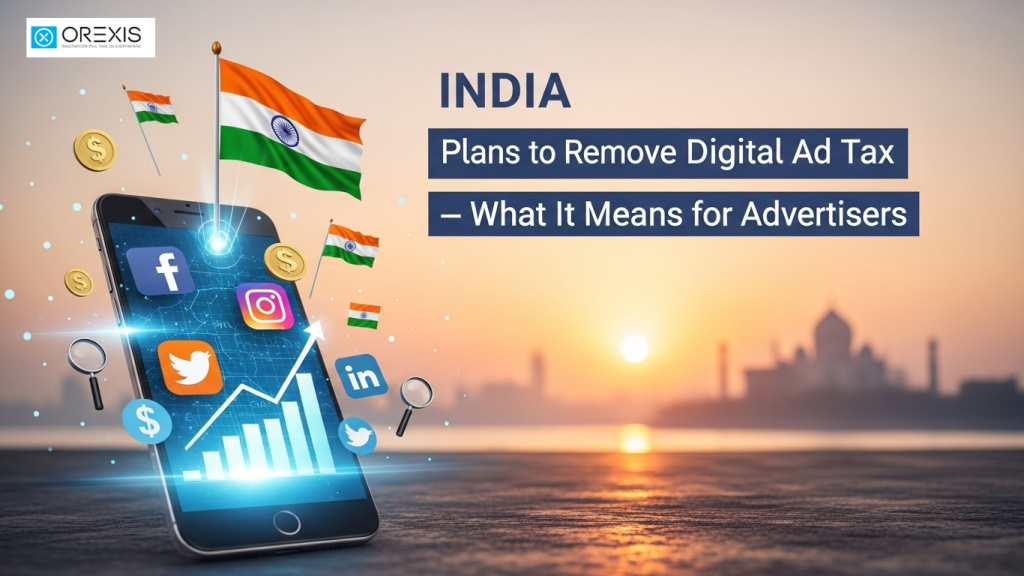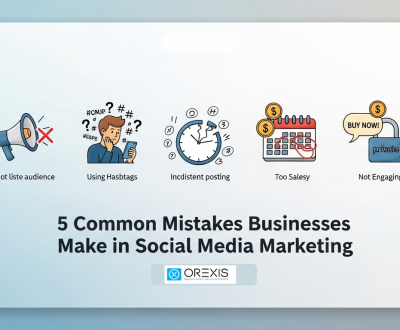India Plans to Remove Digital Ad Tax — What It Means for Advertisers
- November 13, 2025
- Uncategorized

In a significant policy shift, the Government of India has decided to remove the 6 % “equalisation levy” (often called the digital ad tax) on online advertising services provided by non-resident digital platforms. This move—effective from 1 April 2025—marks a change in the tax and regulatory framework for digital marketing in India.
For advertisers, agencies, media planners and marketing professionals, this development holds meaningful implications. Below we explore the background, what is changing, the impact on advertisers (especially in India), and strategic take-aways.
What was the “Digital Ad Tax” (Equalisation Levy)?
- India introduced the equalisation levy (EL) in 2016, specifically targeting online advertisement services offered by non-resident (foreign) service providers that invoice Indian advertisers (or Indian businesses) but don’t have a physical presence in India.
- The levy was set at 6 % on the consideration (gross payments) made by Indian businesses to these non-resident digital ad platforms.
- The logic was to “level the playing field” between domestic digital ad/media companies (which pay Indian taxes) and non-resident platforms generating ad revenues from India.
- Over time, India’s digital tax regime expanded into other digital services and concepts like significant economic presence (SEP) of foreign companies.
- The EL drew criticism from several quarters, especially abroad: for example, the U.S. Trade Representative (USTR) described India’s levy as “discriminatory and unreasonable,” since domestic companies were exempt.
In short: if you were an Indian business or agency placing ads on foreign digital platforms (e.g., global tech platforms), you would have needed to factor in this 6 % tax and additional administrative/compliance overhead.
What’s Changing — The Removal of the Levy
Under the amendments to the Finance Bill 2025, India has proposed abolishing the 6 % equalisation levy on online advertising services offered by non-resident platforms, effective 1 April 2025.
Thus, from that date, the tax burden (for ad payments to non-resident ad service providers) under this specific levy will no longer apply.
The government cites reasons such as aligning with global tax norms (Organisation for Economic Co‑operation and Development’s “Pillar One” framework) and easing trade/ investment tensions.
Why This Change? The Driving Forces
1. Trade & diplomatic pressure
India’s digital ad tax had drawn pushback internationally—especially from the U.S.—on grounds of discrimination against U.S. tech companies. Removal of the tax is seen as part of India’s effort to ease trade friction and attract foreign investment.
2. Regulatory & compliance complexity
The previous regime imposed administrative burdens (quarter-filings, withholding obligations, additional cost pass-throughs) on Indian advertisers/agencies dealing with non-resident platforms.
3. Alignment with global digital-tax frameworks
With global efforts (via OECD, G20) to harmonise digital taxation, India appears to be positioning itself in line with emerging norms rather than unilateral levies.
Implications for Advertisers (India-Focused)
Here’s how this development could affect you (as a marketer, agency professional, or advertiser) in India or working with Indian clients.
Opportunities
- Lower cost of ad placement on global platforms: With the 6 % levy gone, the cost of placing ads (on non-resident platforms) may drop (or at least the tax component disappears). This can improve ROI for advertisers.
- Simplified compliance: Fewer tax/levy overheads when transacting with non-resident ad service providers → faster media buys, less administrative friction.
- Greater flexibility in media mix: Advertisers might re-evaluate foreign platform vs domestic platform placements, as cost differential shifts.
- Benefit for smaller advertisers: Some small Indian businesses were burdened by the levy (which often got passed on to them). Removing the levy could level the competitive playing field.
Considerations / Risks
- Increased competition from foreign platforms: Domestic Indian ad-platforms/publishers that may have benefited from the levy protection may now face stronger competition from global platforms with better cost structures.
- Media-mix recalibration needed: Cost alone is not the only factor — reach, audience specificity, brand safety, platform algorithms matter. Advertisers will need to revisit media strategies in light of the cost change.
- Do not assume cost automatically passes to advertiser: Platforms might not reduce rates just because the tax is removed. Some of the benefit may be absorbed by platforms/ intermediaries.
- Domestic vs foreign platform dynamics: While the tax on foreign platforms is gone, local players still have tax/regulatory environment to navigate. Advertisers should compare total cost and value, not just headline ad-cost.
- Watch for new tax/regulatory regimes: The removal of this levy doesn’t mean the end of digital-tax risk. India (and other countries) may roll out new frameworks under OECD Pillar-One/Two or other nexus/significant-economic-presence models.
What it Means for the Digital Ecosystem in India
- By removing the levy, India signals that it wants to be more business-friendly to the global advertising ecosystem while preserving regulatory oversight.
- It may lead to increased foreign platform participation, more competitive pricing for advertisers, and possibly accelerate digital ad growth in India.
- Domestic ad-platforms/publishers need to innovate (not rely purely on protective tax regimes) to stay competitive.
- The change may shift funding/attention toward more data-driven, performance-oriented digital marketing campaigns, which aligns well with your SEO/SMM/SEM focus.
- For the Indian economy, this fits into the broader vision of digital-first growth, e-commerce expansion, and alignment with global tax/trade frameworks.
Conclusion
While the removal of the 6 % digital ad tax is a favourable change for many advertisers, it is not a “free for all” — cost savings should be put to productive use (better targeting, better creative, smarter optimisations), not just higher ad spend. Also, the digital-tax landscape remains dynamic: new models, global frameworks and domestic regulatory shifts may follow.
About us
Orexis is one of the leading Digital marketing companies in Kozhikode, Kerala, that delivers Complete digital Marketing services like Social media promotions, SEO, PPC, Branding, etc. to their clients. Cost-effective online advertising services and customer satisfaction are our mottoes.
Subscribe to our newsletter!
Recent Posts
- India Plans to Remove Digital Ad Tax — What It Means for Advertisers November 13, 2025
- Perplexity SEO: How to Get Your Website Cited by AI Search Engines November 4, 2025
- How Google SGE Works and How to Rank in AI Overviews October 20, 2025









